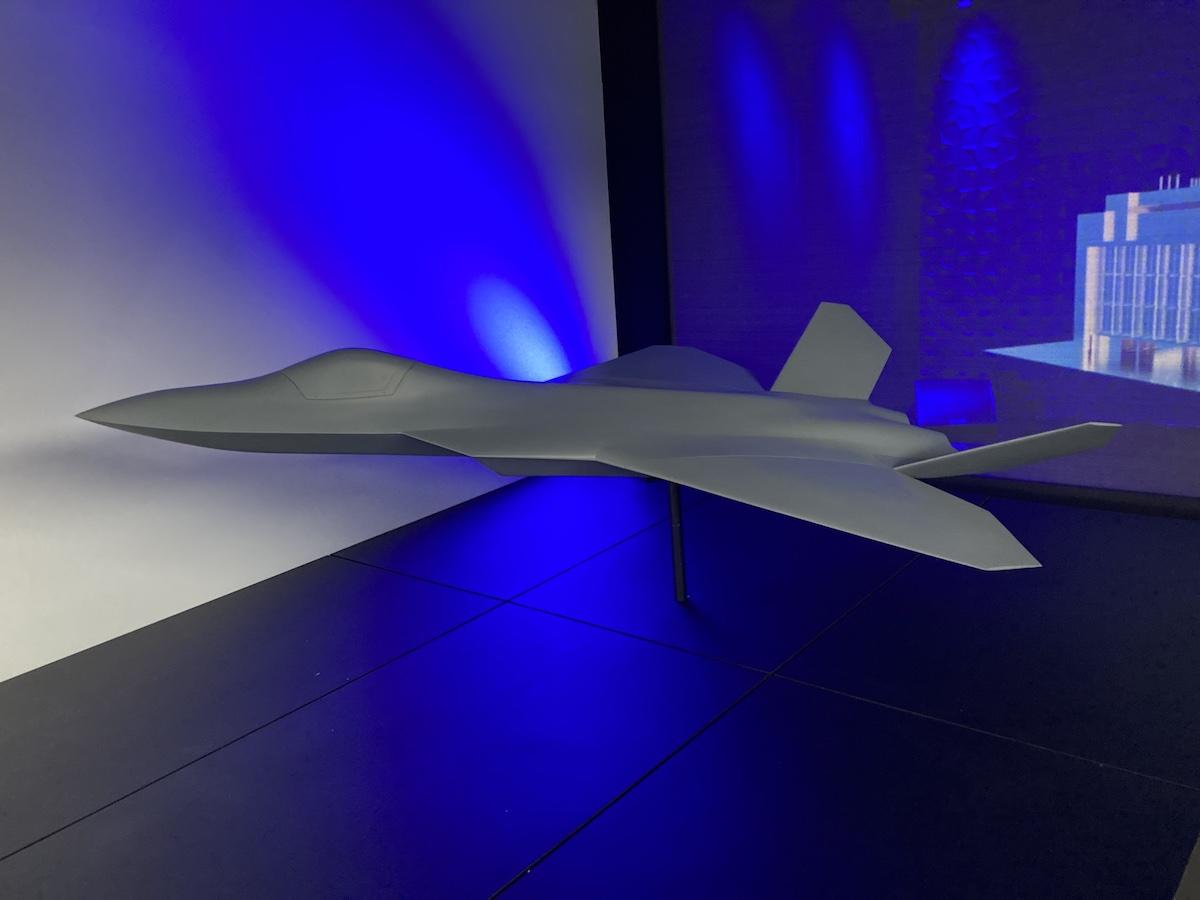
FARNBOROUGH—The UK is to build a demonstrator to support the development of its Tempest crewed combat aircraft.
The crewed, supersonic aircraft will fly within five years, paving the way towards the full-scale development of a fighter that is envisaged to replace the Eurofighter Typhoon by the end of the 2030s.
Work has been underway on the demonstrator for two years, Richard Berthon, the UK defense ministry's director for Future Combat Air, tells journalists on the opening day of the Farnborough Airshow.
The project, he says, was “important for developing the technology, the processes and the skills for learning new techniques for the future.”
The UK and partners including Italy and Japan want to develop a combat aircraft that can be developed in half the time of previous-generation fighters and at a lower cost—the demonstrator will prove out the technologies that support that theory.
Development of the so-far unnamed Tempest demonstrator will continue a long tradition for the development of demonstrators for UK combat aircraft programs. Those include the Experimental Aircraft Program (EAP), which preceded the Eurofighter, and the Taranis unmanned combat air vehicle demonstrator, which itself was preceded by several autonomous technology demonstrators.
“This is a once-in-a-generation activity,” says Herman Claesen, managing director of Future Combat Air Systems at BAE Systems.
“This will underpin the development of a fighter that will leapfrog fourth-generation aircraft and the F-35.”
Claesen says engineers already were flying the demonstrator aircraft in the digital world, and had already generated 100 flight hours and conducted multiple sorties in the hands of BAE and UK defense ministry test pilots.
Like EAP, the Tempest demonstrator will make use of the shelf components from existing aircraft programs and will be used to test what Claesen describes as “high-risk elements” of the program, this could include technologies such as low observability, potentially the ability to release weapons from an internal bay, but also the integration of engines and sensor systems.
The demonstrator program is fully funded from the Future Combat Air System Technology Initiative (FCAS TI), which includes funding from government and industry and is not dependent on the upcoming Q3 2024 business case submission that will decide if the Tempest program moves into full-scale development with partners.
The engine choice has yet to be made. Alex Zino, the executive vice president for business development and future programs, says the focus of the effort is on the de-risking of the integration of the engine and ensuring the powerplant provides the right level of power.
“The design and development of the demonstrator aircraft represents an important milestone, showcasing the success and talent of our engineers, programmers and software developers,” UK Defense Secretary Ben Wallace announced the development of the demonstrator in the British Parliament on July 18.
The news comes as officials confirmed that the UK was conducting joint concept analysis on future combat air requirements with Italy and Japan. UK industry already is working closely with counterparts in Japan on demonstrators for an engine and future radar antenna. This could yet further expand to work on the aircraft itself, with a decision likely to emerge by the end of the year. The Italian Defense Ministry also has confirmed it has signed a collaboration agreement that will see Leonardo in Italy and BAE Systems collaborate on the FCAS program, with a focus on Model Based System Engineering design methodologies and the joint development of enabling technologies.

